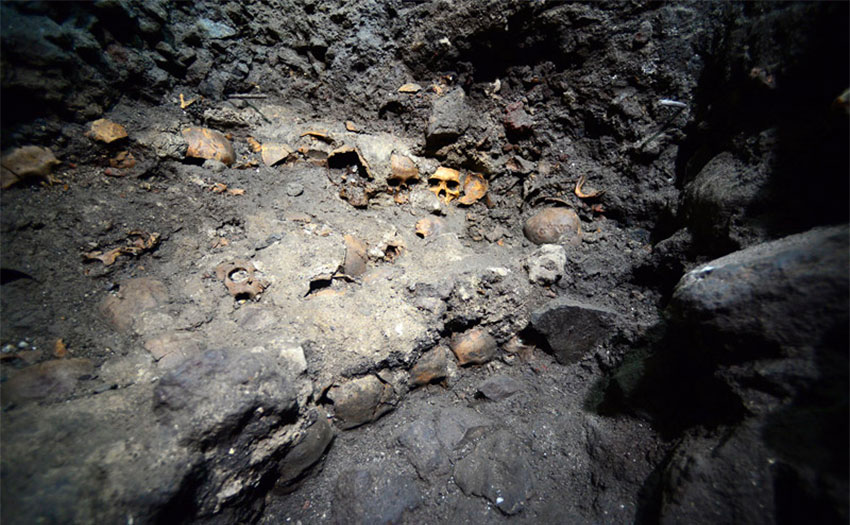Archaeologists have discovered 119 human skulls in an Aztec tower located within a historic building near the Templo Mayor archaeological site in Mexico City.
The federal Ministry of Culture said that archaeologists with the National Institute of Anthropology and History (INAH) found the extreme eastern side and the facade of the Huei Tzompantli, an almost five-meter-diameter circular skull tower that was dedicated to the war, sun and human sacrifice deity Huitzilopochtli and dates back to the final years of the 1400s and first years of the 16th century.
The discovery of the 119 skulls was made in March while the INAH was supervising renovation work on the historic building, located on a street behind the metropolitan cathedral and next to the Templo Mayor, the main temple of the Aztec capital of Tenochtitlán. Other sections of the tower, including 484 skulls, were first discovered in 2017.
“The Huei Tzompantli is without a doubt one of the most impressive archaeological discoveries in our country in recent years,” said Culture Minister Alejandra Frausto. “It’s an important testimony to the power and greatness achieved by México-Tenochtitlán.”
Rodrigo Bolaños Martínez, an INAH physical anthropologist in charge of conducting an analysis of the recently-discovered craniums, said that the skulls of men, women and at least three children were among them.
Raúl Barrera Rodríguez, the head of INAH’s urban archaeology program, and Lorena Vázquez Vallín, who led the team that discovered the skull tower, said it’s likely that some of the people whose craniums form part of the Huei Tzompantli were killed as a sacrifice to the gods.
“Although we can’t say how many of these individuals were warriors, perhaps some were captives destined for sacrificial ceremonies,” Barrera said.
“We do know that they were all made sacred, turned into gifts for the gods or even personifications of deities themselves,” he said.
Barrera said that human sacrifices were carried out daily in Mesoamerica as an offering to the gods. The objective was to ensure the renewal of nature and “the continuity of life itself,” he said.
The practice shocked and instilled fear in the Spanish conquistadores led by Hernán Cortés, who conquered Tenochtitlán in 1521.
According to the Culture Ministry statement, the conquistadores witnessed numerous sacrifice ceremonies at seven tzompantli (skull racks) that were known to exist in the sacred precinct of the Aztec capital.
Mexico News Daily
